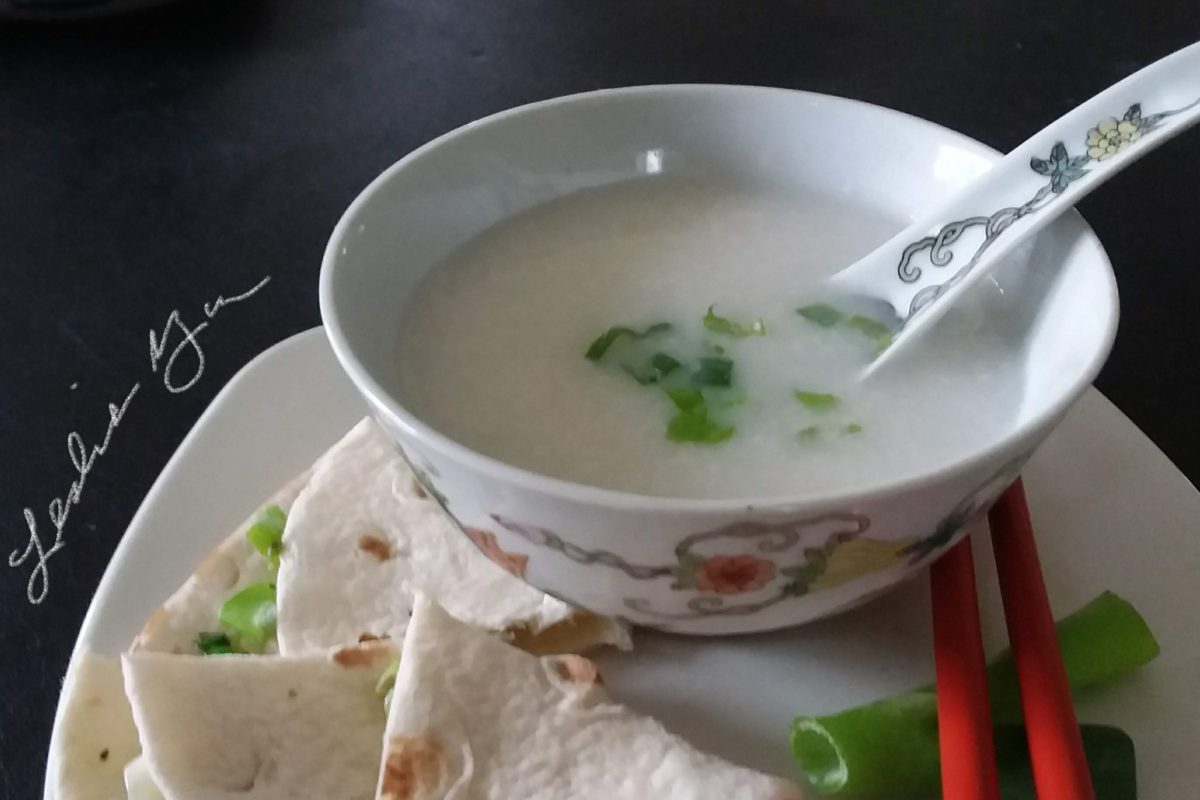Congee is a traditional Chinese down-to-earth comfort food, enjoyed for breakfast, lunch and snacks. This ubiquitous rice staple has many names and many faces, popular throughout Asia and beyond. Each country has its own versions, reflecting the region’s culinary culture and taste.
Congee has always played a special part in my culinary life. When I was a child and not feeling well I could always count on a warm bowl of congee – soothing, nourishing and easy to digest. Throughout the ensuing years, I found myself going back to my trusted congee time and again. It was always simple and satisfying. Often I used leftover rice to make congee by diluting it with chicken broth or water. The longer the rice is cooked, the better.
When I was a graduate student in Philadelphia my friends and I would, at the spur of the moment, drive to Chinatown in New York City for a “midnight snack” of congee to refuel our brains. Of course we could not pass up the opportunity to order other dishes. Smoked fish and aromatic beef were two of my favorite cold plates that go well with hot congee. Eating was serious business and a communal affair, so we would designate someone to oversee and coordinate the menu selections. Sometimes that someone was me. Each dish must have a raison d’etre relative to the other dishes. If I learned nothing else in graduate school, I still knew that the whole is greater than the sum of its parts. Nowhere was this declaration more evident than around the dinner table at the Chinese restaurant.
The method I use for cooking congee is easy. In fact, it practically cooks by itself. All you need to do is to put a little medium grain rice and lots of water in a crockpot, then set it on low to cook overnight. The ratio is 8 to 1, that is, about 8 parts water to 1 part rice. A pot of fresh, creamy rice porridge will greet you in the morning. This is basic congee, which can be served either as is or enhanced with a choice of tasty ingredients.

The versatility of congee is such that it can be easily elevated to the high end of the culinary scale.
Let’s begin at the top with Raw Fish Congee:
Transfer the congee to a pot, add chicken broth, finely shredded lettuce, and minced fresh ginger. Bring to a boil. Drop in thin slices of fresh fish such as flounder or filet of sole to “flash cook.” Ladle congee into individual bowls. Add a dollop of caviar – a touch of class to complete the transformation. Garnish with cilantro or chopped scallions. The bland congee is a perfect counterpoint to the salty caviar and vice versa. This made-for-each-other pair is a study in contrasts: high/low, standard/sophisticated, ordinary/special, east/west, yin/yang, all at the same time.
Next in line is a classic combination, Ham & Corn Congee:
Starting with the basic congee, add chicken broth, creamed corn and slivers of ham. Garnish with chopped scallions. You can add a raw egg at the bottom of the bowl before pouring in the hot congee. The result is an Asian style breakfast of ham and eggs!
Congee is also good plain, with various accompaniments and side dishes. Often it is served with youtiao, a kind of Chinese fried cruller. Recently I woke up to the faint aroma of simmering rice and waxed nostalgic for a Chinese breakfast. Since hunger is always conducive to inspiration, I improvised a quickie scallion pancake: Heat chopped scallions in a lightly oiled pan, place a warmed soft taco on top. Press, flip and fold. That’s it! The aroma was evocative, the taste even better. You can also use tortillas, pita, naan or flatbread.
Congee is an ideal vehicle for recycling leftovers, giving them a second life. The resulting concoctions are limited only by your imagination.
Life is a bowl of congee. So many delicious possibilities.![]()
